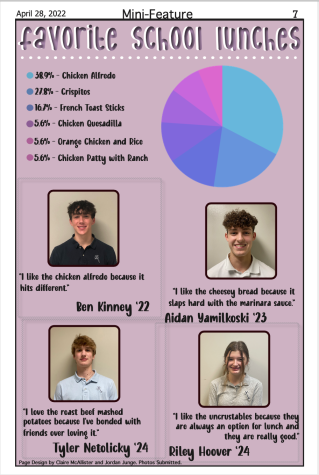To-NATO, tomato
April 7, 2022
As Henry Ford, an American industrialist, once said, “Coming together is a beginning. Keeping together is progress. Working together is success.” On April 4, 1949, the North Atlantic Treaty Organization (NATO) or the Washington Treaty was formed in Washington D.C. and is still active throughout the world today. It was created by twelve nations, some of those being the United States, Canada and other Western European nations such as Belgium and France. Today, NATO has 30 member states. The purpose behind this alliance is to protect the freedom and security of Allied countries through political and military measures. When NATO was formed after World War II, there was suffering in many parts of Europe. Because of these conflicts, millions of people died and many were homeless. Former cities were shells of what they used to be and the economy had collapsed. Further, the threat of Communism rang throughout Europe, towering over democratic governments with the influence of the Soviet Union. Newly formed Communist parties in France and Italy had started to arise and Soviet armies were stationed all over the central and eastern parts of the continent. What resulted was the Iron Curtain, coined by Winston Churchill, former Prime Minister of the United Kingdom. NATO had been formed partially to counteract these things. According to the organization, NATO was formed for three reasons: deterring Soviet expansionism, forbidding the revival of nationalist militarism in Europe through a strong North American presence on the continent and encouraging European political integration. The heart of the group’s mission is found within Article 5 of the NATO treaty, stating that “an armed attack against one or more of them in Europe or North America shall be considered an attack against them all.” Article 5 was first invoked in 2001 during the aftermath of the September 11 terrorist attacks. Historically, NATO has made efforts to connect with Russia in hopes for peace. NATO has tried to form a partnership in Russia for more than three decades, however, these efforts ended after Russia illegally annexed the Crimean Peninsula, a region of Ukraine. Due to this, NATO does not recognize this region as Russian. In recent events, NATO has responded to the Ukraine crisis and has condemned Russia strongly for their full-scale invasion of Ukraine, as Ukraine has been a close partner to the Alliance. NATO implores Russia to cease all military action in Ukraine and stop the conflict there, stating that it is, “entirely unjustified and unprovoked.” Some have questioned why NATO has not intervened in Ukraine. The reasoning behind this is that Ukraine is not an official member of NATO, which means that there is no obligation to come to their aid. If Ukraine was a member, members of NATO would be obligated to defend it. However, many surrounding NATO countries have increased their military support in recent weeks as well as provided indirect support such as giving weapons, ammunition and a number of other things. Ms. Gineal Schrunk, a Xavier Social Studies teacher gives her insight in light of Pope Francis’ consecration of Russia and Ukraine. “In response to the invasion of Ukraine, Pope Francis has called for an Act of Consecration of Russia and Ukraine to the Immaculate Heart of Mary. This consecration is, in part, a response to the express wish made by Our Lady during her apparitions in Fatima,” Schrunk said. “During one of the apparitions, right before the Russian Revolution broke out, Our Lady asked for the consecration of Russia to her Immaculate Heart.” For more updates, look into local and global news.



